The Right to Education Bill which belatedly proposes to put the country’s massive 160 million out-of-school children into classrooms, was first mooted in 2003. Despite a constitutional amendment, it is being passed from Centre to state governments, committee to committee and shuttled between groups of ministers. Summiya Yasmeen reports
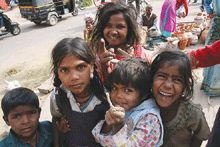 Given its deep, long-term implications, it’s potentially the most revolutionary legislation in Indian history. Yet the Right to Education Bill, which mandates free and compulsory education to all children in the age group six-14 — an issue which provoked a constitutional amendment unanimously approved by a voice vote of Parliament in 2002 — has not yet been enacted into law. Shamefully, the draft of the Bill, which belatedly proposes to put the country’s massive cohort of 160 million out-of-school children into classrooms, is being passed from the Centre to state governments, from committee to committee and shuttled between groups of ministers as in a pass-the-parcel children’s game.
Given its deep, long-term implications, it’s potentially the most revolutionary legislation in Indian history. Yet the Right to Education Bill, which mandates free and compulsory education to all children in the age group six-14 — an issue which provoked a constitutional amendment unanimously approved by a voice vote of Parliament in 2002 — has not yet been enacted into law. Shamefully, the draft of the Bill, which belatedly proposes to put the country’s massive cohort of 160 million out-of-school children into classrooms, is being passed from the Centre to state governments, from committee to committee and shuttled between groups of ministers as in a pass-the-parcel children’s game.
On August 8, the Union cabinet, which has been preoccupied with getting the Indo-US nuclear deal approved by the US Congress, referred the draft Right to Education Bill, 2008, back to a new group of ministers (GoM). This means the RTE Bill, drafted to give effect to Article 21A of the Constitution of India (viz, “the State shall provide free and compulsory education to all children of the age of six to fourteen years in such manner as the State may by law determine”) enacted following the 86th amendment to the Constitution in 2002, won’t be ready for tabling in the winter session of Parliament beginning October 17.
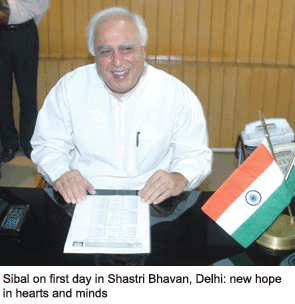 An ailing Arjun Singh, Union human resource development minister and prime mover of the RTE Bill, 2008, who was absent from the August 8 cabinet meeting, will chair the reconstituted GoM, which includes Union finance minister P. Chidambaram, Union science and technology minister Kapil Sibal, and the Planning Commission deputy chairman Montek Singh Ahluwalia. This is the second time the Bill has been referred to a GoM (it was first referred to a high-level group in 2006). Curiously the composition of the new GoM is similar to the previous one. The only deletion is of C. Rangarajan who recently quit from the PM’s Economic Advisory Council. No deadline has been set for the new GoM to submit its recommen-dations. “We still have to finalise details such as the extent to which the states would need to contribute to fund the programme and (quality) norms that need to be followed,” Sibal informed the media after the August 8 cabinet meeting.
An ailing Arjun Singh, Union human resource development minister and prime mover of the RTE Bill, 2008, who was absent from the August 8 cabinet meeting, will chair the reconstituted GoM, which includes Union finance minister P. Chidambaram, Union science and technology minister Kapil Sibal, and the Planning Commission deputy chairman Montek Singh Ahluwalia. This is the second time the Bill has been referred to a GoM (it was first referred to a high-level group in 2006). Curiously the composition of the new GoM is similar to the previous one. The only deletion is of C. Rangarajan who recently quit from the PM’s Economic Advisory Council. No deadline has been set for the new GoM to submit its recommen-dations. “We still have to finalise details such as the extent to which the states would need to contribute to fund the programme and (quality) norms that need to be followed,” Sibal informed the media after the August 8 cabinet meeting.
The historic re-worked RTE Bill, 2008 was widely expected to be presented in the monsoon session of Parliament after being buried in the HRD ministry, and tossed between the finance and law ministries and the Planning Commission for over four years. Despite assurances from the top including the prime minister, that the Bill is a top priority with the government and will be enacted before next year’s general election, to all intents and purposes, it has been consigned to the deep freeze.
Astonishingly, the Congress-led UPA government which has not hesitated to fund the purchase of customised jet airplanes for the prime minister and political VVIPs for almost Rs.1,000 crore (see EW September p.122), and which over the past three years has cheerfully passed the foreign junkets bill of Central government bureaucrats (excluding ministers) aggregating to a massive Rs. 56.38 crore (see India Today September 15, 2008), the hurdle blocking passage of the RTE Bill is fiscal rectitude and propriety.
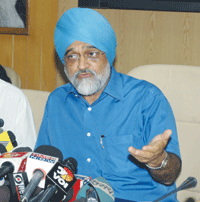 Manmohan Singh, Chidambaram and Ahluwalia have all publicly expressed concern about ways and means to fund the Bill which mandates the State i.e government, to pay for the education of out-of-school children which will require an additional estimated Rs.36,000 crore per year. In an interview with Outlook magazine (September 8) Ahluwalia (who according to social activists is the main opponent of the Bill) said: “The main issue before us is, where do we get the money to implement the Act? If we can, can we then have a formula worked out between the states so that the financial arrangements become clear? The HRD ministry says we will expand the Sarva Shiksha Abhiyan. Where will the money come from? The Planning Commission is only saying someone has to pay the additional burden.”
Manmohan Singh, Chidambaram and Ahluwalia have all publicly expressed concern about ways and means to fund the Bill which mandates the State i.e government, to pay for the education of out-of-school children which will require an additional estimated Rs.36,000 crore per year. In an interview with Outlook magazine (September 8) Ahluwalia (who according to social activists is the main opponent of the Bill) said: “The main issue before us is, where do we get the money to implement the Act? If we can, can we then have a formula worked out between the states so that the financial arrangements become clear? The HRD ministry says we will expand the Sarva Shiksha Abhiyan. Where will the money come from? The Planning Commission is only saying someone has to pay the additional burden.”
Quite evidently, despite often pontificating on the subject of education, Ahluwalia doesn’t have the time or inclination to read EducationWorld (last March he famously declined to respond to over a dozen phone calls and faxes from EW, soliciting answers to some questions on the Union budget 2007-08). On several occasions this publication has provided road maps detailing ways and means by which the Union government can mobilise Rs.150,000 crore-plus per year for investment in education (see EW cover stories February 2007 and April 2008).
Such nit-picking and buck-passing is typical of the UPA-led government of the middle class and for the middle class, which offers mere lip service to the vital cause of public primary education. This is evidenced by the manner in which the draft RTE Bill has become a political football kicked around between committees and the Centre and state governments.
Since the 86th amendment to the Constitution was unanimously approved by Parliament in 2002, the consequential RTE Bill in its various manifestations has had a rough passage. Following the 86th Amendment, the BJP-led NDA government (1999-2004), drafted its Free and Compulsory Education for Children Bill, 2003. But shortly thereafter, the NDA government was unexpectedly voted out of office. Following the swearing in of the Congress-led UPA government in New Delhi in 2004, the Bill’s future became uncertain.
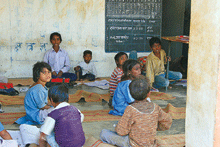 Fortunately immediately after assuming office as Union HRD minister, Arjun Singh revived the hitherto moribund Central Advisory Board of Education (CABE) which constituted a committee under the chairmanship of Kapil Sibal to “suggest a draft of legislation envisaged in a new Article 21A of the Constitution”. On June 30, 2005 the CABE Committee submitted its report to the HRD ministry, suggesting a new draft of the Free and Compulsory Education Bill (aka Right to Education Bill), which in the committee’s opinion would require the Central government to spend an estimated Rs.321,196 crore to Rs.436,458 crore over six years.
Fortunately immediately after assuming office as Union HRD minister, Arjun Singh revived the hitherto moribund Central Advisory Board of Education (CABE) which constituted a committee under the chairmanship of Kapil Sibal to “suggest a draft of legislation envisaged in a new Article 21A of the Constitution”. On June 30, 2005 the CABE Committee submitted its report to the HRD ministry, suggesting a new draft of the Free and Compulsory Education Bill (aka Right to Education Bill), which in the committee’s opinion would require the Central government to spend an estimated Rs.321,196 crore to Rs.436,458 crore over six years.
If the newly inducted 17-party coalition UPA government — which in its NCMP (National Common Minimum Programme) concordat signed with the communist parties committed itself to raising the national outlay for education from 3.4 percent to 6 percent of GDP — had done its math properly, these seemingly huge outlays would have translated into Rs.53,500-72,700 crore per year — just 1.2-1.5 percent of GDP.
But these seemingly big numbers sent the Central govern-ment into a tizzy. To re-examine the financial and legal implications of the RTE Bill, the Union cabinet set up a high-level group (HLG) comprising Arjun Singh, Chidambaram, Montek Singh Ahluwalia and the PM’s economic advisor C. Rangarajan. The group met in January 2006 and suggested that the Centre should restrict itself to providing the state governments with a model bill and that instead of Central legislation, the country’s 29 state governments (excluding Jammu & Kashmir) should enact their own RTE legislation modelled on the Centre’s draft Bill to give effect to Article 21A.
In June 2006, when state governments were informed of this new education enablement strategy, they unanimously opposed it. In all, 22 state governments wrote to the HRD ministry opposing the transfer of responsibility for provision of free and compulsory elementary education to children to state governments, and demanded a Central law.
Under fire from states, civil society groups and education NGOs for backsliding, in April 2007 prime minister Manmohan Singh once again referred the issue to the HLG. The group met again in November 2007, and recommended that a Central RTE Bill could be tabled in Parliament if the HRD ministry pared down its outlay. The ministry responded by slashing its estimate of operationalising the RTE Bill from Rs.53,500 crore per year to Rs.38,112 crore. And subsequently, following a mid-census correction which reduced the country’s child population by 6 million, the financial requirement was further reduced to an additional annual outlay of Rs.25,166 crore.
Yet despite substantial dilution of the financial implications of the Bill and a February 14, 2008 directive of the prime minister that Central legislation be introduced in the budget session of Parliament, a new draft of the Bill hasn’t yet been tabled on the plea that it requires formal clearance by finance and law ministries and the Planning Commission.
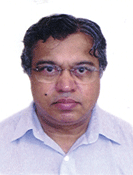 Little wonder champions of the 86th Amendment are beginning to lose patience. “The draft Right to Education Bill, 2008 has become a football, tossed between various ministries and high level groups. As a result, we are exactly where we began in 2005 when the CABE committee submitted its recommendations. This delay is inexcusable as there’s no shortage of money or resources. What’s lacking is political will and pressure from civil society. The type of public and political pressure exerted to push through the Right to Information Bill and the National Rural Employment Guarantee Act 2005, is missing in this case. There is shocking indifference in government about education of the poor. We have been tolerating an elitist and highly discriminatory education system which has no parallel except perhaps in Pakistan or Bangladesh. Only when the RTE Bill is enacted into a law, can it be adjudicated in the courts. Otherwise it’s a meaningless right,” says Professor R. Govinda of the National University of Educational Planning and Administration (NUEPA), Delhi, who also served as a member of the CABE working committee chaired by science and technology minister Kapil Sibal.
Little wonder champions of the 86th Amendment are beginning to lose patience. “The draft Right to Education Bill, 2008 has become a football, tossed between various ministries and high level groups. As a result, we are exactly where we began in 2005 when the CABE committee submitted its recommendations. This delay is inexcusable as there’s no shortage of money or resources. What’s lacking is political will and pressure from civil society. The type of public and political pressure exerted to push through the Right to Information Bill and the National Rural Employment Guarantee Act 2005, is missing in this case. There is shocking indifference in government about education of the poor. We have been tolerating an elitist and highly discriminatory education system which has no parallel except perhaps in Pakistan or Bangladesh. Only when the RTE Bill is enacted into a law, can it be adjudicated in the courts. Otherwise it’s a meaningless right,” says Professor R. Govinda of the National University of Educational Planning and Administration (NUEPA), Delhi, who also served as a member of the CABE working committee chaired by science and technology minister Kapil Sibal.
It’s not just political consensus that has eluded the RTE Bill, currently in its seventh avatar. Ab initio several education NGOs, civil society groups, teachers’ associations and representative organisations of private schools and government-aided schools opposed various provisions of every draft RTE Bill. For instance the managements of the country’s 75,000 private independent schools patronised by the influential middle class have been up in arms against proposals making it mandatory for them to admit varying percentages of poor children in their neighbourhoods. Section 17 (1) (iii) of the draft RTE Bill, 2008 requires schools of specified categories (eg. Kendriya Vidyalayas), and unaided (independent) schools to provide elementary education “to at least 25 percent children admitted to class I after the commencement of this Act, from among children belonging to weaker sections randomly selected by the school, and for continued education of such children in the school thereafter till completion of elementary education or till they seek transfer from the school, whichever is earlier.”
Although RTE 2008 proposes that in the interests of student body diversity, independent schools should allocate 25 percent of class I seats for poor neighbourhood children, it doesn’t mandate provision of free charge education of quota students. It provides for reimbursement of tuition expenses incurred by private schools in educating poor children: “…the appropriate government shall reimburse to the school at a rate equal to the per child expenditure in state schools/fully aided schools and state funded pre-schools, or the actual amount charged per student by such, whichever is less”. But there is no provision for reimbursement of other fees (eg. art and craft, sports, excursion fees, etc), which are levied by most private schools. Currently the average per child expenditure incurred in government schools is Rs.3,000-4,000 per year. Against this, private school tuition fees range between Rs.15,000-80,000).
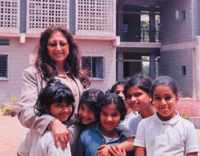 “The induction of children from neighbouring economically weaker communities into independent, fee-charging schools is completely impractical and will not be accepted by parents who often make great financial sacrifices to send their children to us. The provision is impractical, because children from poor households are certain to be disoriented in independent schools, which are for children from more well-to-do business and professional backgrounds. Moreover the Bill requires independent schools to provide education to poor children only up to class VIII. What happens to them after class VIII? Do they go back to poor quality government schools and readjust all over again? This is ill-conceived legislation which will traumatise socio-economically deprived children, and must be opposed for the sake of all children,” says Anu Monga, the experienced principal of the Bangal-ore International School and chairperson of the 75-member The Association of International Schools of India (TAISI).
“The induction of children from neighbouring economically weaker communities into independent, fee-charging schools is completely impractical and will not be accepted by parents who often make great financial sacrifices to send their children to us. The provision is impractical, because children from poor households are certain to be disoriented in independent schools, which are for children from more well-to-do business and professional backgrounds. Moreover the Bill requires independent schools to provide education to poor children only up to class VIII. What happens to them after class VIII? Do they go back to poor quality government schools and readjust all over again? This is ill-conceived legislation which will traumatise socio-economically deprived children, and must be opposed for the sake of all children,” says Anu Monga, the experienced principal of the Bangal-ore International School and chairperson of the 75-member The Association of International Schools of India (TAISI).
Adds S.S. Nathan, principal of the CBSE-affiliated Bala Vidya Mandir, Chennai: “If the goal of the RTE Bill is to provide equitable education to all, it won’t be achieved by reserving 25 percent of class I capacity in independent, elite schools. Instead, all independent schools should adopt government schools in their neighbourhoods and provide quality education in environments in which poor children are comfortable. Forcing private independent schools to admit poor children because of political considerations will only result in the steady dilution of academic standards in these schools.”
Against this backdrop of pervasive fear of depression of academic standards and social integration problems in India’s private independent schools, if they admit socio-economically disadvantaged class (SEDC) students, it’s pertinent to cite the example of an enabling reservation directive in the national capital’s private schools, which is working well. In 2004 the Delhi high court, in a public interest litigation filed by the Delhi-based NGO Social Jurist, ruled that private schools in the national capital which had been allotted land at concessional prices by the Delhi Development Authority (DDA) must reserve one in five seats for poor neighbourhood children. Though initially there was considerable resistance to this court diktat, today an estimated 40 top-rung schools in the capital including The Sri Ram School, Sanskriti and Vasant Valley have admitted SEDC children from their neighbourhoods.
Yet typically, the 86th Amendment, Article 21A and the RTE Bill debate, which should be all about building additional capacity in primary and secondary education by investing larger resources in the school system, has transformed into a public versus private schools controversy. In particular, Left-inspired academics and NGOs have grabbed the opportunity to target the country’s private school system, which unlike India’s dumbed-down govern-ment-controlled education system, provides high quality internationally benchmarked school education.
A coalition of education NGOs and civil society groups led by the People’s Campaign for a Common School System (PCCSS) is building public support for conversion of private/independent schools into neighbourhood schools, where children of the rich and poor study in the same classrooms. PCCSS has made several presentations to the CABE committee which drafted the RTE Bill, as well as to the HRD ministry to radically rewrite the Bill to state that “all schools (state, aided and unaided) shall provide free and compulsory education to the children in the age group of six-14 years”. It advocates a publicly funded common school system (CSS), first recommended by the Kothari Commission in 1966, as the panacea to India’s quest for equitable quality elementary education for all children.
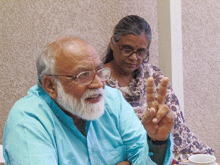 “The RTE Bill, 2008 legitimises the current multi-layered system and schools that promote inequality — such as elite government Kendriya Vidyalayas and private independent schools. It is designed to discriminate against government schools and denies equity and justice to 200 million children who receive unequal and inferior education. The RTE Bill is reflective of the neo-liberal policies pursued by the State, which is interested only in the middle and upper middle class and the private sector, and is completely indifferent to education of the poor. The Eleventh Plan document advocates the school vouchers system and public-private partnerships in education. By sanctioning the shifting of public funds to private schools, the draft Bill has become an instrument of market forces ideology. In effect the RTE Bill 2008 is an RTE (Discrimination, Privatisation & Commercialisation) Bill, 2008,” says Bhopal-based Dr. Anil Sadgopal, an alumnus of the University of Technology, California, former dean of academics at Delhi University and a dissenting member of the CABE Committee (2005) who is an active campaigner for the common school system. Sadgopal believes the only way the 86th Amendment can be enforced is by establishing a publicly-funded common school system founded on the concept of neighbourhood schools.
“The RTE Bill, 2008 legitimises the current multi-layered system and schools that promote inequality — such as elite government Kendriya Vidyalayas and private independent schools. It is designed to discriminate against government schools and denies equity and justice to 200 million children who receive unequal and inferior education. The RTE Bill is reflective of the neo-liberal policies pursued by the State, which is interested only in the middle and upper middle class and the private sector, and is completely indifferent to education of the poor. The Eleventh Plan document advocates the school vouchers system and public-private partnerships in education. By sanctioning the shifting of public funds to private schools, the draft Bill has become an instrument of market forces ideology. In effect the RTE Bill 2008 is an RTE (Discrimination, Privatisation & Commercialisation) Bill, 2008,” says Bhopal-based Dr. Anil Sadgopal, an alumnus of the University of Technology, California, former dean of academics at Delhi University and a dissenting member of the CABE Committee (2005) who is an active campaigner for the common school system. Sadgopal believes the only way the 86th Amendment can be enforced is by establishing a publicly-funded common school system founded on the concept of neighbourhood schools.
Though a government-funded common school system providing high quality primary/secondary education — a model adopted by several G8 countries such as Canada, Germany, Japan and the US — is an ideal, the fact is that CSS has already been operational in post-independence India. Except that there are no takers for neighbourhood government-run schools characterised by dilapidated buildings, pathetic infrastructure, chronic teacher shortages and absenteeism, medium of instruction muddles and abysmal learning outcomes. The middle class has long fled government schools and even the poorest households scrimp and save to send at least their male children to ‘convent’, i.e private English medium, schools.
Against this backdrop, the focus of Left-inspired academics and NGOs on the private school system must be seen for what it is: backdoor nationalisation — a prescription for dumbing down, if not extinction of the private school system. Unsurprisingly, the obvious alternative of raising teaching-learning standards in the country’s 1.24 million government schools, so that they attract children from all strata of society, leaves Left intellectuals cold. Therefore to its credit, the new RTE Bill, 2008 drafted with the aid and advice of liberal educationists, academics and NGOs, includes provisions which will raise infrastructure and academic standards in government schools. It lays down norms for school buildings and classrooms, provision of separate toilets for boys and girls, drinking water facilities and kitchens to prepare children’s mid-day meals.
Moreover the draft RTE Bill which is sticking in the throats of the government and NGO sector for differing reasons, also addresses the problems of teacher shortages and absenteeism. The Bill stipulates a teacher-pupil ratio of 1:30 in elementary schools countrywide, mandates minimum teacher qualifications and outlaws the disastrous practice of hiring under-qualified para teachers under the contract system. The draft RTE Bill, 2008 mandates that “after the commencement of this Act, only such persons as possess the qualifications prescribed under the NCTE Act shall be appointed as teachers.”
Quite obviously all these overdue provisions of the RTE Bill, 2008 have wide financial implications necessitating drastic changes in government spending priorities, if not additional resource mobilisation, especially in New Delhi. Hence the hesitation and backsliding on the Bill within the Congress party. Simultaneously nit-picking Left ideologues and academic fellow travellers perennially in search of perfect solutions, have seized upon the draft Bill to attack private/independent schools — the one bright spot of a moribund education system.
Wasteful politicians and leftist social activists apart, education bureaucrats are also spooked by several provisions of the draft Bill which severely curtail their vast powers over the school education system. The draft RTE Bill mandates the promotion of School Management Committees (SMCs) comprising “elected members of the local authority and parents, teachers and community members” in government and aided schools to supervise them. The draft Bill vests the SMCs with wide overriding powers including the right to punish truant and non-performing teachers, manage school assets and utilise government grants, all of which is bad news for state government educrats long accustomed to lording over government schools.
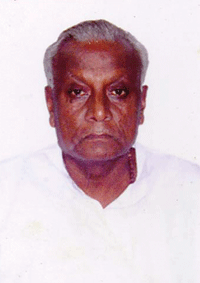 Nor has the proposal in the RTE Bill, 2008 to decentralise school education by devolving wide powers on SMCs gone down well with the 6.3 million teachers’ community. “We are opposed to the sweeping powers given in the Bill to SMCs. Our society is not prepared for this ideal accountability mechanism. There’s a danger that SMCs will be dominated by anti-social elements in the rural hinterland and even in the cities. In such a scenario if a teacher angers a powerful SMC member or his relatives, he’ll have to pay a heavy price. The power of SMCs to appoint and punish teachers will worsen the teacher shortage crisis. Moreover the Bill wants the school property and infrastructure to be transferred to SMCs. This will give rise to corruption and SMC members will get tempted to siphon off government funds. Our demand is that the management and development of government schools must remain vested in state governments. The Bill must not discriminate against government schools; it should also bring private schools under the purview of SMCs,” says Ram Pal Singh, the Delhi-based president of the All India Primary School Teachers Federation.
Nor has the proposal in the RTE Bill, 2008 to decentralise school education by devolving wide powers on SMCs gone down well with the 6.3 million teachers’ community. “We are opposed to the sweeping powers given in the Bill to SMCs. Our society is not prepared for this ideal accountability mechanism. There’s a danger that SMCs will be dominated by anti-social elements in the rural hinterland and even in the cities. In such a scenario if a teacher angers a powerful SMC member or his relatives, he’ll have to pay a heavy price. The power of SMCs to appoint and punish teachers will worsen the teacher shortage crisis. Moreover the Bill wants the school property and infrastructure to be transferred to SMCs. This will give rise to corruption and SMC members will get tempted to siphon off government funds. Our demand is that the management and development of government schools must remain vested in state governments. The Bill must not discriminate against government schools; it should also bring private schools under the purview of SMCs,” says Ram Pal Singh, the Delhi-based president of the All India Primary School Teachers Federation.
Quite obviously, given the vested interest in the status quo of the Central government (which spends 25 percent of its massive Rs.403,000 crore tax revenue on itself and the establishment), power-hungry educrats, teachers unions and independent school managements intent upon preserving their autonomy, the provisions of the RTE Bill 2008 can be debated ad nauseam. Therefore on the principle that better is the enemy of good, the RTE Bill 2008 in its present form — with all its infirmities — needs to be urgently enacted into law.
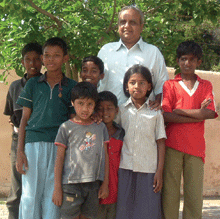 “Admittedly the RTE Bill is not an ideal document, but every educationist should support its enactment as it will give effect to Article 21 A of the Constitution guaranteeing children between six and 14 years free and compulsory elementary education. Only when the Bill becomes law, will it become justicable in the courts. The first priority of all right-thinking citizens must be to ensure that this happens without delay. Perceived imperfections of the Bill can be rectified by the courts,” advises Dr. A.S. Seetharamu, former professor of education at the Institute of Social and Economic Change, Bangalore and currently education advisor to the Karnataka state government.
“Admittedly the RTE Bill is not an ideal document, but every educationist should support its enactment as it will give effect to Article 21 A of the Constitution guaranteeing children between six and 14 years free and compulsory elementary education. Only when the Bill becomes law, will it become justicable in the courts. The first priority of all right-thinking citizens must be to ensure that this happens without delay. Perceived imperfections of the Bill can be rectified by the courts,” advises Dr. A.S. Seetharamu, former professor of education at the Institute of Social and Economic Change, Bangalore and currently education advisor to the Karnataka state government.
This viewpoint is endorsed by Dr. Balaji Sampath, an IIT-Madras and University of Maryland alumnus, and currently director of Association for India’s Development (AID), a Chennai-based NGO. “Education is a fundamental right and denying it is tantamount to killing a child’s dreams at age six. The way forward is to first get the Bill enacted into law, and a public-private partnership model can be introduced later to meet the challenges of educating the millions of children ready to enter the primary school system every year,” says Sampath.
Meanwhile the pressure is on the new GoM, which is expected to meet next month, to bite the bullet and commit the Union government to funding the RTE Bill 2008. The revised estimated additional expenditure of Rs.36,000 crore (less than 1 percent of GDP) is a small price to pay to induct the huge population of India’s out-of-school children estimated at 160 million into primary education. Forty years after the Kothari Commission recommended that government (Centre plus states) spending on education must rise to 6 percent of GDP, the actual annual expenditure hovers around 3.6 percent. Finance is hardly a problem. There is sufficient hidden wealth and slack within the economy to release resources for investment in the vital education sector. (see EducationWorld February cover story 2007).
“At a time when the Indian economy is growing at 9 percent per year, the government cannot plead lack of resources for education. The Tapas Majumdar Committee appointed by the Union government in 2005 pointed out that in view of the lapse of more than four decades since the Kothari Commission recommendations and the callous indifference of the Indian state towards them, there’s a huge cumulative education deficit in Indian society. The committee therefore recommended allocation of 10 percent of GDP for education for the next ten years, after which it can be gradually brought down to 6 percent. It’s time the government mustered the political will to mobilise resources for education by redrawing its expenditure priorities. Otherwise there will be a heavy price to pay by way of social instability,” warns Ambarish Rai, the Delhi-based convener of the People’s Campaign for Common School System.
That’s good advice. Six years after the 86th Constitutional Amendment guaranteeing free and compulsory education to children between six and 14 years was unanimously passed by Parliament, the right to education promise is yet to translate into reality. With only two sessions of Parliament left and general elections scheduled for next year, time is running out for the UPA government. Its myopic leaders seem unaware that passage of the Bill is one of the best bets to prevent a rout of the Congress in the general election of 2009.
They need to discharge their promise to the children of India before they are swept into the dustbin of history.
With Autar Nehru (Delhi) & Hemalatha Raghupathi (Chennai)